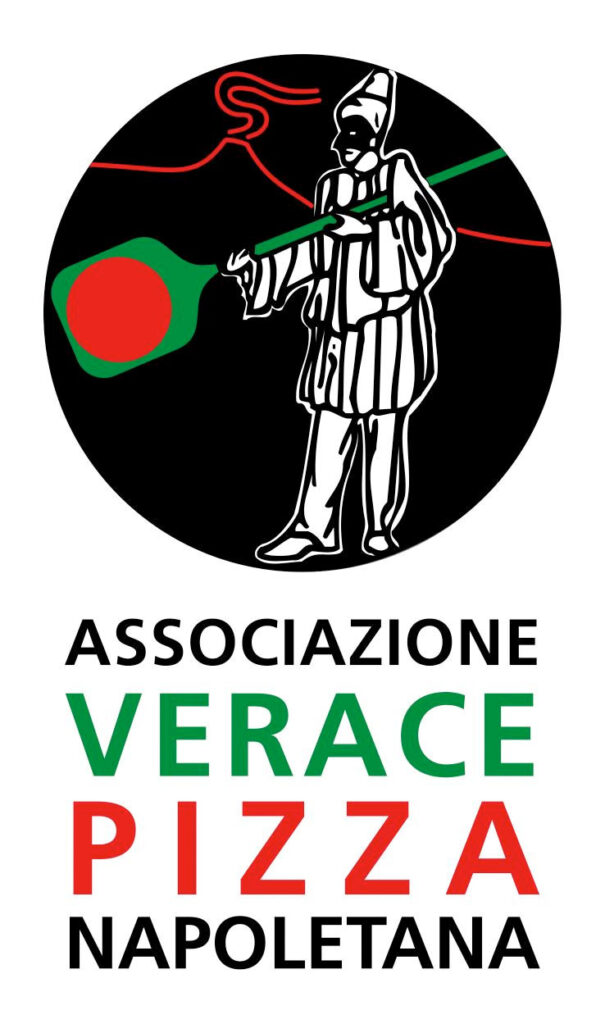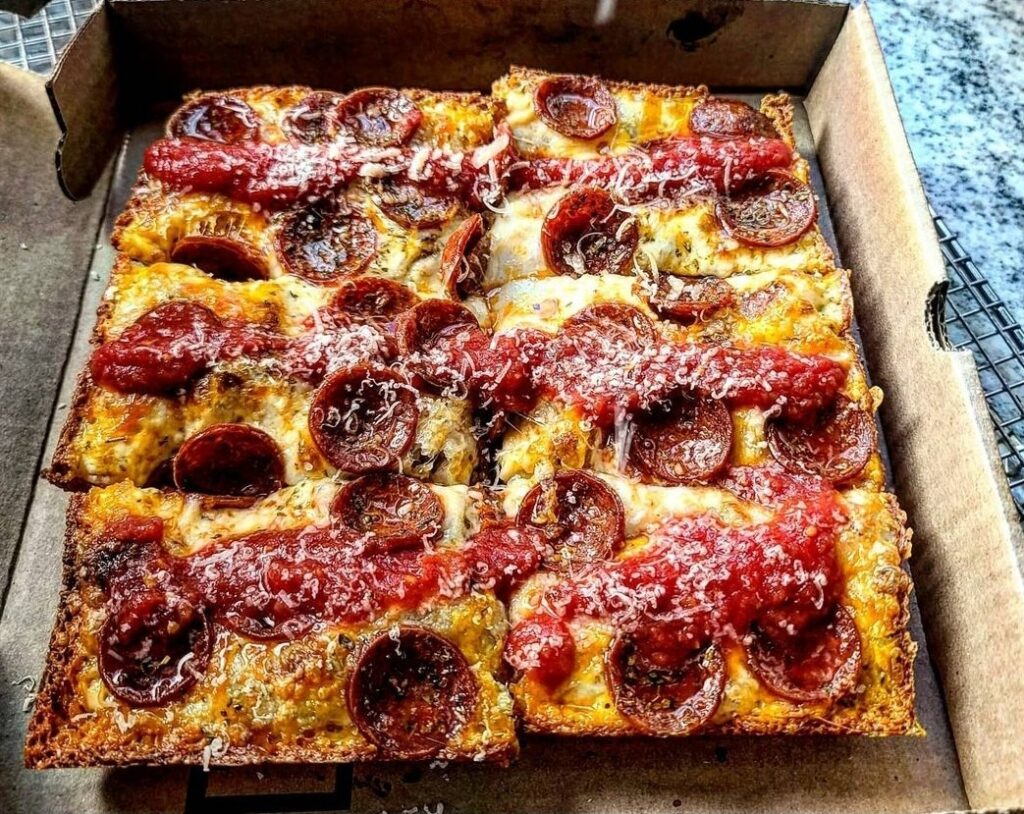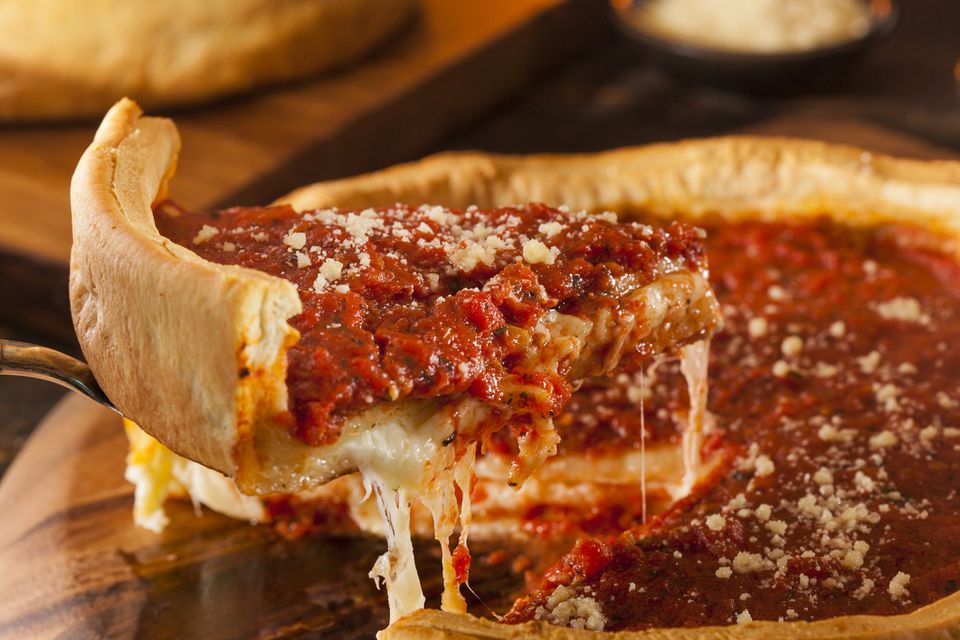Detroit, Chicago, NY or Napoli? All You Need to Know About Pizza Styles
Not all pizza is created equal. Nowadays one of the world’s most beloved foods is offered in many different styles, shapes, and flavor profiles. New York, Chicago, Napoli, Sicily, Rome, and Detroit are each known for their own signature recipes. We often get asked about the differences between the various styles. This post is dedicated to defining them.
But first, a little bit of pizza history….

Evidence of round bread with toppings from Egypt’s Old Kingdom was presented to the Pharaoh on his birthday. The documents of Darius I from Persia traveling to Europe with flatbread in the 6th century BCE were also among the earliest sources of evidence of “pizza” which as then topped with cheese and dates.
In Italy, the oldest known predecessors of modern pizza hailed from Sicily, where 3,000-year-old flatbread remains and baking tools were found. The ancient Roman philosopher Cato also mentioned “flat rounds of dough dressed with olive oil, herbs, and honey baked on stones” similar to those served by the ancient Egyptians. It is believed that the ancient Romans and people in all of its territories, including Naples and the modern-day Campania region, ate pizza as an every-day food. The ruins of Pompeii reveal that pizza was made with various tools and many different toppings and was sold at street stands and in bakeries.

The earliest of “modern” pizzas which date to the 17th century was the Mastunicola, – a pizza made with lard, aged cheese, and herbs) in Napoli. In the 18th century, the world of “pizza” took on a new meaning when tomatoes arrived from the new world. Soon came the Marinara pizza which, as its’ name suggests was made by a fisherman’s wife in 1734.
It is believed that in 1889 pizzaiolo Raffaele Esposito made three pizzas in honor of King Umberto di Savoia and his wife Queen Margherita. While Raffaele made the Marinara and the earlier Mastunicola recipes, it was his wife who added the mozzarella and basil to make the pizza represent the Italian flag (red, white, and green) colors and it was then that the Pizza Margherita was born. Both the King and Queen approved of the pizza, and Raffaele Esposito’s wife’s famous recipe became emblematic of not only pizza but of Naples itself.

In the 20th century, many Italian emigrants began opening pizzerias in the Americas. In the United States, slices were often warmed in charcoal heated drums. At that point, pizza was still considered a food of immigrants. But when American soldiers returned home from Naples after World War II, they longed for the street food they had grown to love.

According to the Associazione Verace Pizza Napoletana (AVPN), “in June of 1984, a group of Neapolitan people representing some of the oldest and most prestigious pizzerias in Naples, founded an organization called Associazione Verace Pizza Napoletana, with the purpose of preserving and cultivating the culinary art of making the authentic Neapolitan pizza.” Subsequently, Neapolitan pizza was declared a part of cultural food heritage by the Italian government.
The European Community granted “Pizza Napoletana” STG or Specialty Tradition Guaranteed status to distinguish it from non-authentic pizzas. Nowadays more pizza is eaten per capita in the United States (46-slices per year) than it is in Italy, thanks to delivery “pizza.” As of December 2017, the art of Neapolitan pizza-making was added to UNESCO’s Representative List of the Intangible Cultural Heritage of Humanity. “Pizzaiuoli (pizza-makers) are a living link for the communities concerned,” says UNESCO (the United Nations Educational, Scientific and Cultural Organization).

Our Resident Instructor, Felice Colucci, defines the various pizza styles this way:
New York-style:
This style is known for having a thin crust and a crunchy texture. Low-moisture and slightly dried fresh mozzarella along with American or other tomatoes (they don’t have to be San Marzano) are preferred. Optimal hydration for this style is 60-63% while the pizzas should be baked in a 480F-550F degree oven.
Sicilian:

This style is known for its’ thick crust which can be up to 1”-thick and is cooked in an oiled pan. Sicilian pizza has up to 70% hydration and is cooked with the bottom of the oven set at a higher temperature than the top to create the signature crispy crust. Normally has around 540F on top with 570F on the bottom. Because this pizza has a thicker style, it usually incorporates slightly sweeter tomatoes and low-moisture mozzarella. The Sicilian pizza should be crunchy on the outside and soft on the inside. Another style, “Grandma” pizza is made out of the same dough as Sicilian – but it is slightly less thick. Both styles are directly influenced by Sicilian immigrants who prepared an adapted version of their traditional “sfincione” in the United States.
Detroit:

This style uses the same dough as the Sicilian and “Grandma” styles. What distinguishes it, however, is the way in which it is topped as well as its border. When preparing the Detroit-style pizza, Brick Cheese from Wisconsin is sprinkled along the sides of the pan between the pan and the crust to make a very crunch, slightly charred crust. The pizza dough is first topped with mozzarella and then baked while the tomato sauce is slow-cooked separately and then used to top the pizza after the cheese has already been melted.
Chicago:

Also known as “Deep Dish,” this dough uses less than 58% hydration making it dryer than the other styles. It is rolled out very thin and placed in a pan. All of the topping ingredients (such as meat and vegetables) are placed inside. A layer of mozzarella is placed on top, followed by a layer of tomatoes or tomato sauce. Chicago-style pizza should be baked at 450F degrees for 25-30 minutes.
Roman-style:

There are two types of pizza associated with the city of Rome – one is long and baked directly on the stones while the other is square and cut “al taglio” – by the piece in tavole calde. In Rome. Normally when Roman pizza styles are discussed -they are talking about the round or long (rectangular) one. This is a very moist dough with at least 75% hydration. It is baked in a 480F-500F degree oven to give it its signature – very crunchy- exterior.
Napoletana:

This is the most widely reproduced or copied of all pizza types. Authentic Pizza Napoletana is known for being very tender, light, and moist at the same time. It cooks for only 90 seconds in an 800F degree oven and needs 58-65% hydration. Its ingredients must be Italian and coming from a specific area such as San Marzano tomatoes. You cannot use more than 3 ingredients at a time in this type of pizza – which is about the marriage of ingredients with the proper technique. Pizza Napoletana is always finished with extra-virgin olive oil and fresh basil. For more information on the official guidelines of Vera Pizza Napoletana, click here.
Neo-Neapolitan:

Out of the Neapolitan style, the Neo-Neapolitan style was born. This method uses the same dough as the Neapolitan and similar ingredients but is cooked in an oven which is heated between 700F-730F degrees in 2 to 21/2 minutes. The lower temperature and additional cooking time produce a more crunchy exterior.




